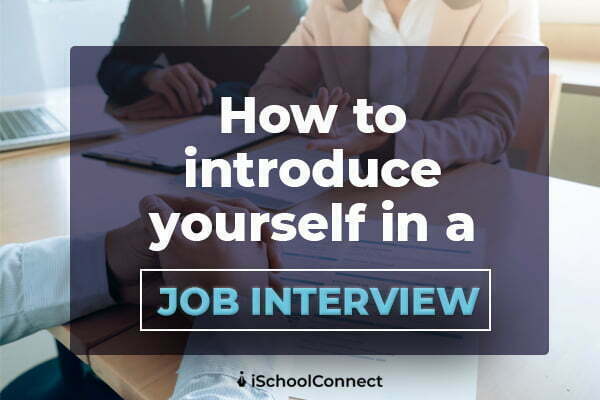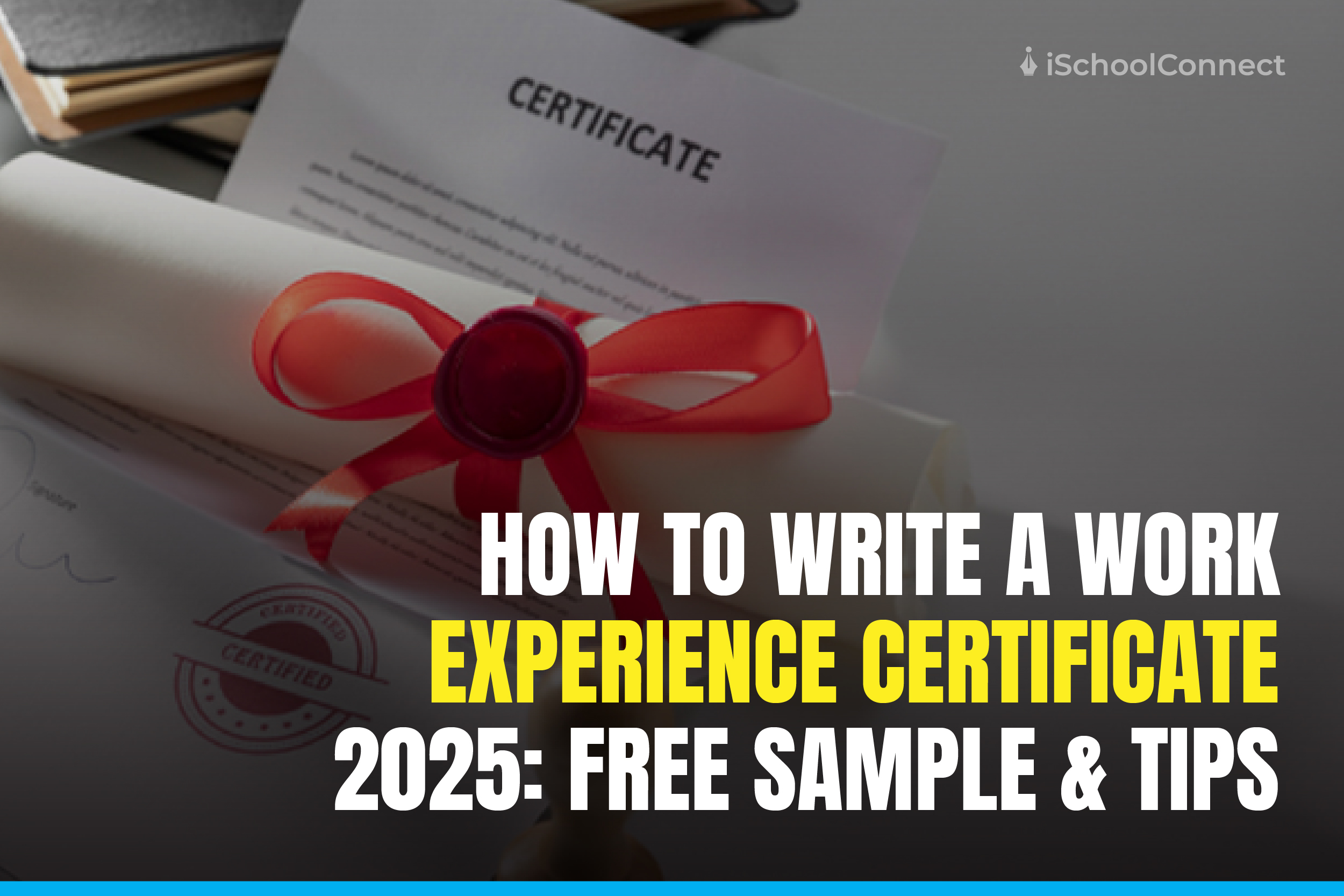Table of Contents
- Self-Introduction for Interview
- Here are some tips and tricks!
- The Best Self-Introduction for Interviews
- Self-Introduction for Freshers in Interview
- Self-Introduction Samples for Freshers in a Job Interview
- Body Language in Self-Introduction
- Self-Introduction Sample for Job Interviews
- Things to Avoid in Self-Introductions
- Introduction Examples for Fresher and Experienced
- Bonus tips
- Key Takeaways
- FAQs
Self-Introduction for Interview
We know that feeling – your heart’s racing, your palms are getting sweaty, and you’re sitting outside that interview room wondering if you should run for the hills! But hey, those pre-interview jitters? They happen to everyone, even the most seasoned professionals.
Take a deep breath. You’ve done your homework and prepared for this moment. Those butterflies in your stomach? They’re just a sign that you care about doing well.
Read More: SEO interview questions | Ace interviews with these 15 questions
One of your secret weapons is going to be how you introduce yourself. Think of it as your personal highlight reel – a chance to make the interviewers sit up and take notice. But here’s the thing: you don’t want to sound like you’re reading from a script. The key is to be yourself while putting your best foot forward.
A job portal defines self-introduction as “A self-introduction explains who you are, what you do, and what others need to know about you”. This type of introduction can be given out any time you meet people, either at the personal or professional level.
For example, you can use a self-introduction when:
- You begin an interview
- Attend a recruitment drive
- Network with professionals in your field
- Give a professional presentation
- Meeting new people at a trade show
However, there is a special application during interviews, and this is where most candidates face a hard time. So, before we dive into crafting that perfect introduction, let’s chat about what makes a great self-introduction. Because there’s an art to it, and we would love to help you nail it.
Are you ready to explore what makes a winning self-introduction for an interview? Let’s do exactly that.
Here are some tips and tricks!
- Keep it Relevant
Think of your introduction as telling a story – but not just any story. You want to highlight the chapters that’ll make your interviewer think, “Wow, this person gets it!” If you’re going for a teaching position, they’ll want to hear about that amazing project you did with your students. Landing a sales gig? Tell them about how you knocked your sales targets out of the park!
- Everyone’s dilemma – Content
Now, I know you might be wondering, “What exactly should I include?”. It’s building a sandwich – you want all the layers in the right order: Start with the basics (your name and background), add your educational credentials, sprinkle in your work achievements, and top it off with what makes you unique. Oh, and don’t forget to mention why you’re excited about joining their team!
- Emphasize your Skills
When it comes to your skills, be like a DJ – mix in the ones that’ll get your interviewer nodding along. Are you a creative wizard applying for a design role? Tell them about your coolest projects. More of a numbers person going for that accounting position? Show off your analytical superpowers!
- Keep it Concise yet relevant
Here’s a pro tip: Keep it short and sweet – about the length of a pop song (2 minutes max). You want to leave them wanting more, not checking their watch!
- Practice Aloud
And please, please practice! Talk to your mirror, your cat, your best friend – whoever will listen. It’s like rehearsing for a play – the more you practice, the more natural it feels. But remember, you’re not memorizing a script; you’re just getting comfortable telling your story.
- Showcase Enthusiasm
Show some genuine excitement, too! It’s like when you’re telling a friend about your favorite movie – that natural enthusiasm is contagious. And hey, if the interviewer starts asking questions before you’re done, go with the flow. Think of it as a conversation, not a monologue.
- End it with a positive note
Wrap it up with something that shows you’re eager to be there. Maybe something like, “I’m really looking forward to learning more about how I could be part of your team” – but make it your own!
Remember, you’re not just reciting facts – you’re sharing your professional journey with someone who’s genuinely interested in getting to know you. Keep it real, keep it relevant, and most importantly, be yourself! You got it!
The Best Self-Introduction for Interviews
To deliver the best self-introduction for an interview, there are four important things you need to integrate into your response. These four components give the interviewer an overview of who you are, both personally and professionally.
It also allows the interviewer to make a positive initial judgment. This will create a strong building block for further questioning. Let’s look at these four important components-
1. Who are you?
This part of your self-introduction should be all about who you are as a person. Therefore, you need to begin with your full name and briefly talk about your personality traits. Don’t hesitate to throw in your likes and dislikes in this part of your response, as it adds more facets to your character.
2. Where do you come from?
Include your place of birth, where you currently live, as well as some information about your family background (be brief). This will give the interviewer a chance to assess your cultural background. This helps interviewers understand if you will fit in well with the company culture.
3. What is your qualification?
A concise statement about your educational qualifications is also needed in your self-introduction for job interviews. Although the details of your educational qualifications are given in your resume, it is always a good idea to add a brief about the same in your self-introduction. You can also mention any extra-curricular activities you have been a part of.
4. What are your professional traits?
Finally, your self-introduction should also include some of your professional traits. These can include any job-specific attributes as well as general transferable skills, such as communication, leadership, teamwork, dedication, and perseverance. Talk about some projects you have been a part of so that the interviewer has a more concrete perspective of your competencies.
Explore How to: Master Study Abroad Interview Questions
Self-Introduction for Freshers in Interview
It may be overwhelming to develop a self-introductory statement from scratch. So, here is a guide to developing a meaningful and effective self-introduction for interviews that can help you secure a job!
- Start by stating your full name, where you live, and your professional aspirations.
- Next, you can mention your immediate family, where they live, your permanent residence, your current residence, as well as your place of birth. Integrating a few of these details into your self-introduction can often give you a chance to build rapport with the interviewer in the rare instance that you share the same hometown as the interviewer.
- After this step, you will need to have all your educational qualifications placed on a table in front of you in chronological order. Make a note of these and prepare a carefully concise summary of your entire educational journey. This is one of the most important steps in the self-introduction in interviews for freshers.
- However, if you are an experienced candidate, then apart from the educational qualifications, you also need to mention the most important aspects of your professional experience and competencies.
Also, remember to keep all of this brief, as you have less than 60 seconds to give your introduction.
Check out: 50+ must know interview questions for students
Self-Introduction Samples for Freshers in a Job Interview
“Hi! I’m Shivani Singh. I recently graduated from Stanford University with a degree in Computer Science. During my time there, I had the chance to lead a team of four on our senior project, where we developed an app to help students find study groups. Outside of class, I was active in our college’s coding club and mentored first-year students. I’m particularly interested in software development because I love solving puzzles and creating things that make people’s lives easier. I’ve been following your company’s work in AI-assisted healthcare, and I’d be thrilled to contribute to projects that have such a meaningful impact.”
See how Shivani kept it punchy but included her relevant experience? Here’s another approach:
“Hello, I’m Daison Davis. I completed my Business Administration degree at Michigan State last month, where I specialized in Marketing. What really excites me about marketing is how it blends creativity with data-driven decision-making. During my internship at a local startup, I ran their social media campaigns and increased engagement by 40%. I’m also passionate about sustainability – I led our campus recycling initiative. When I saw your company’s commitment to eco-friendly practices alongside your innovative marketing strategies, I knew this was exactly where I wanted to start my career.”
And here’s one more style:
“Good morning! I’m Upasana Verma, and I just earned my engineering degree at Georgia Tech. My fascination with renewable energy led me to focus on solar technology – actually, my thesis project was about improving solar panel efficiency in urban environments. I was President of our Engineering Society and organized two tech fairs that connected students with industry professionals. I noticed your company’s recent breakthrough in solar storage solutions, and I’d love to be part of a team that’s pushing the boundaries of clean energy.”
The key ingredients these introductions share:
- They start with basic info but quickly move to what makes them unique
- They connect their passions to actual experiences
- They show they’ve done their homework about the company
- They’re brief but memorable
- They sound natural and enthusiastic
Remember, these are just templates to inspire you – your introduction should reflect your own personality and experiences. The best introductions feel genuine, and help spark a real conversation with your interviewer.
Body Language in Self-Introduction
The “tell me about yourself” question has been thrown at us several times. However, briefly defining the best in yourself in a professional setting is challenging. Acing self-introduction in an interview is crucial and, hence, shouldn’t be overlooked by a person intending to make an excellent first impression.
In an interview, a positive impression is created with the help of both verbal communication and non-verbal communication. Hence, even with the best pitch, if your body language isn’t in sync, it can lead to less-than-optimal performance.
To have an engaging introduction in a professional set-up, ensure that you create a positive first impression with your words and body language. Maintain eye contact during the entire conversation while introducing yourself. Doing so will demonstrate your confidence and engagement in the conversation. Don’t slouch or have droopy shoulders. Relax your shoulders and maintain your natural body language—couple this confidence with clear verbal communication of your thoughts and ideas.
Further Reading: Top 10 Angular Interview Questions
Self-Introduction Sample for Job Interviews
So, now that you are aware of the format and the ways to prepare such a statement have a look at some of these samples. Change your answer according to the position and company you’re applying for. Here is a template to draft your self-introduction statement.
Hello, my name is (your full name). I am from (name of your hometown) and I currently live in (name of your current residence). I’ve completed my diploma/graduation/post-graduation in (name of your course) from (name of your University).
I have worked on a few projects in the past that have helped me gain good time management and creative skills. I have always been a keen learner and volunteer on my days off.
Along with this, I have also been part of several leadership workshops/any other professional competency-building activities and am able to stay focused under pressure.
While this was a template, let’s look at a self-introduction statement.
“Hi, I am Ratnesh Mishra. I am from Delhi and completed my Bachelor of Engineering degree in 2009 from NIT Patna.
I got hired by a renowned IT company through a campus placement. I have been working with the company for almost a decade now. I have learned the ins and outs of IT operations in my journey from a fresher to a manager.
My qualifications and work experience make me a suitable candidate for the profile. I am looking to join your organization to explore new dimensions and for the further development of my skills.”
Things to Avoid in Self-Introductions
There are quite a few things you should avoid saying in a self-introduction. So let’s have a look at them.
- Avoid giving out too much personal information.
- Don’t toot your own horn or appear boastful. This type of overconfidence is never considered a great sign of job interviews.
- You also need to be aware that you are not simply citing everything that is already given in your resume because a self-introduction usually covers information that is not in it.
- Also, never ask the interviewer about what they want to know because it could lead to the assumption that you have come unprepared.
- Finally, do not waste a lot of time on your self-introduction because the time limit during your personal interview round is limited. This is one of the most crucial tips for a simple self-introduction for interviews.
Discover: Tips to Prepare for Campus Placement
Introduction Examples for Fresher and Experienced
- For Fresher
Hi, I am Naman Gupta, a B. Com graduate from Dehradun. I have been living in Pune since I graduated from St. Charles Degree College, Dehradun, in 2020.
My father teaches Hindi at a government school, and my mother works for a private bank. I have a younger brother studying in the 10th standard who lives with my parents back home.
In the past few months, I have enrolled myself in business accounting and taxation courses and learnt software like Tally and QuickBooks. I believe that I gained real-world skills during my 6-month internship at XYZ company.
Other than my studies, I love tennis and chess, and I am an active member of the local drama club.
- For Experienced
Hi, I am Akash Ahlawat. I completed my B. Tech in Computer Science in 2003 at JNTU, Hyderabad. I have worked at ABC IT company for over ten years after getting placed there in my final year of college. As a team leader and project manager, I am well-versed in the stages of the application development life cycle.
I currently oversee two teams in my new role at the organization I joined in 2015. I think that my skills can be valuable to your company.
I make it a point to spend the weekends with my family and visit my parents, who live down the block. Fitness is important to me, and I believe that working out at the company gym can cultivate strong camaraderie between colleagues.
Bonus tips
- Apart from the verbal articulation of a compelling self-introduction, the importance of virtual interviews and their distinct requirements have recently emerged. Adapting to these circumstances, online interviews have become a norm, and the nature of self-introductions has somewhat evolved.
- The significance of maintaining appropriate body language, maintaining eye contact, and a composed yet engaging posture during virtual interviews cannot be overstated.
- Ensure that your attire is professional and appropriate even for the online setup.
- Moreover, technical aspects such as the quality of video and audio, camera placement, and internet connectivity have a pivotal role in leaving a positive impression during the virtual self-introduction.
- Remaining adept at digital communication tools is crucial. It’s advisable to practice an online self-introduction in front of a camera to fine-tune non-verbal cues, ensuring they complement your verbal discourse during online interviews.
Also read: Top Video Interview Analyzer Tools
Key Takeaways
- Since self-introduction is such an important part of interview preparation, it is best to begin practicing your communication skills early on.
- The best way to do this is to frequently interact with peers and also participate in co-curricular activities like debates and extempore at school.
- The skills you develop doing these activities will help you in the future to draft an impressive and convincing self-introduction for interviews.
- Additionally, a key point to remember is to keep your introduction short and to the point.
- Avoid talking for over 60 seconds.
Liked this blog? Then, read: Technical interview questions for freshers | 7 popular questions
FAQs
Ques 1: How do you end a self-introduction for an interview?
Answer 1: The final piece of information that you need to use to end a self-introduction is your work experience. Avoid saying ‘so yeah’ at the end.
Ques 2: How do you prepare a self-introduction for an interview?
Answer 2: You can use the steps outlined here to prepare yourself for personal interview rounds. Apart from that, you can also try practicing your introduction in front of a mirror to learn the best facial expressions and non-verbal communication that are required in an interview.
Ques 3: Where to find self-introduction for interview samples?
Answer 3: You can easily find several such samples online, using which you can model your own self-introduction statements.
Ques 4: How do you introduce yourself in an online interview?
Answer 4: Ensure your body language is good. Sit up straight, don’t fidget, make good eye contact, have your camera set in place, and don’t keep adjusting it. Treat this interview as if it were an in-person interview, and you’re good to go!







This is really great !
Hey Hiren,
We are glad you liked the blog, you may also find this interesting- F1 visa interview questions and how to answer them
This is great, I like it